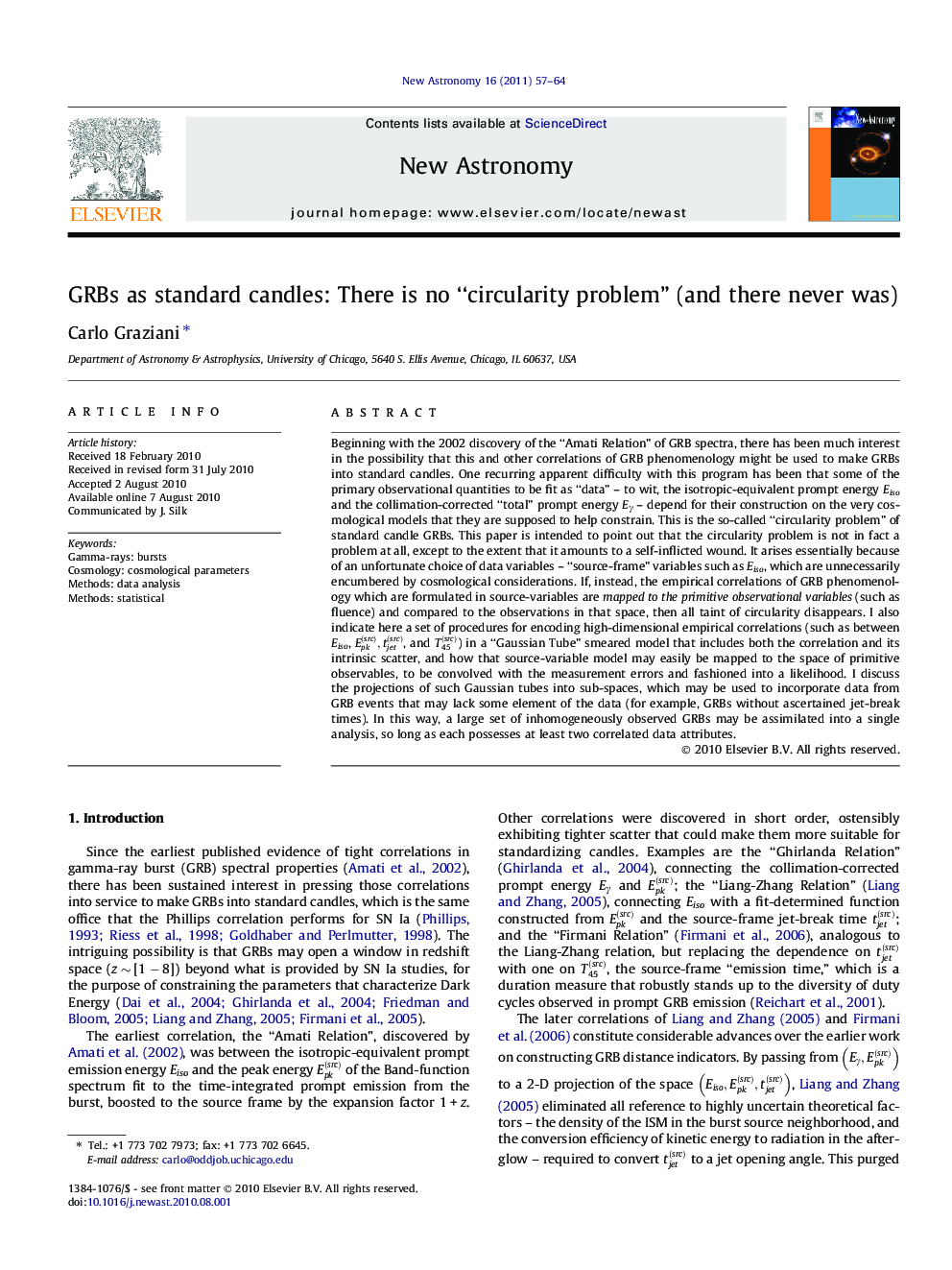| Article ID | Journal | Published Year | Pages | File Type |
|---|---|---|---|---|
| 1779423 | New Astronomy | 2011 | 8 Pages |
Abstract
Beginning with the 2002 discovery of the “Amati Relation” of GRB spectra, there has been much interest in the possibility that this and other correlations of GRB phenomenology might be used to make GRBs into standard candles. One recurring apparent difficulty with this program has been that some of the primary observational quantities to be fit as “data” - to wit, the isotropic-equivalent prompt energy Eiso and the collimation-corrected “total” prompt energy Eγ - depend for their construction on the very cosmological models that they are supposed to help constrain. This is the so-called “circularity problem” of standard candle GRBs. This paper is intended to point out that the circularity problem is not in fact a problem at all, except to the extent that it amounts to a self-inflicted wound. It arises essentially because of an unfortunate choice of data variables - “source-frame” variables such as Eiso, which are unnecessarily encumbered by cosmological considerations. If, instead, the empirical correlations of GRB phenomenology which are formulated in source-variables are mapped to the primitive observational variables (such as fluence) and compared to the observations in that space, then all taint of circularity disappears. I also indicate here a set of procedures for encoding high-dimensional empirical correlations (such as between Eiso, Epk(src),tjet(src), and T45(src)) in a “Gaussian Tube” smeared model that includes both the correlation and its intrinsic scatter, and how that source-variable model may easily be mapped to the space of primitive observables, to be convolved with the measurement errors and fashioned into a likelihood. I discuss the projections of such Gaussian tubes into sub-spaces, which may be used to incorporate data from GRB events that may lack some element of the data (for example, GRBs without ascertained jet-break times). In this way, a large set of inhomogeneously observed GRBs may be assimilated into a single analysis, so long as each possesses at least two correlated data attributes.
Related Topics
Physical Sciences and Engineering
Physics and Astronomy
Astronomy and Astrophysics
Authors
Carlo Graziani,
